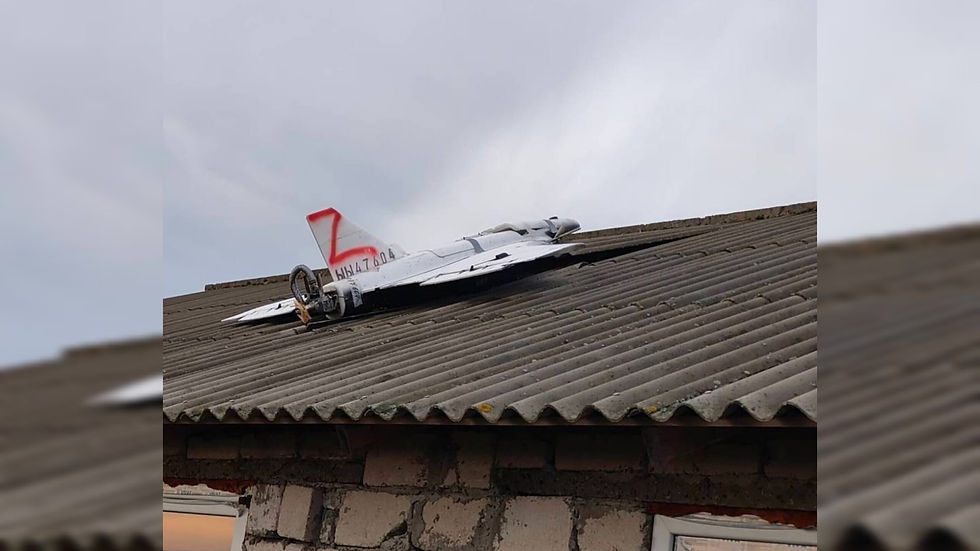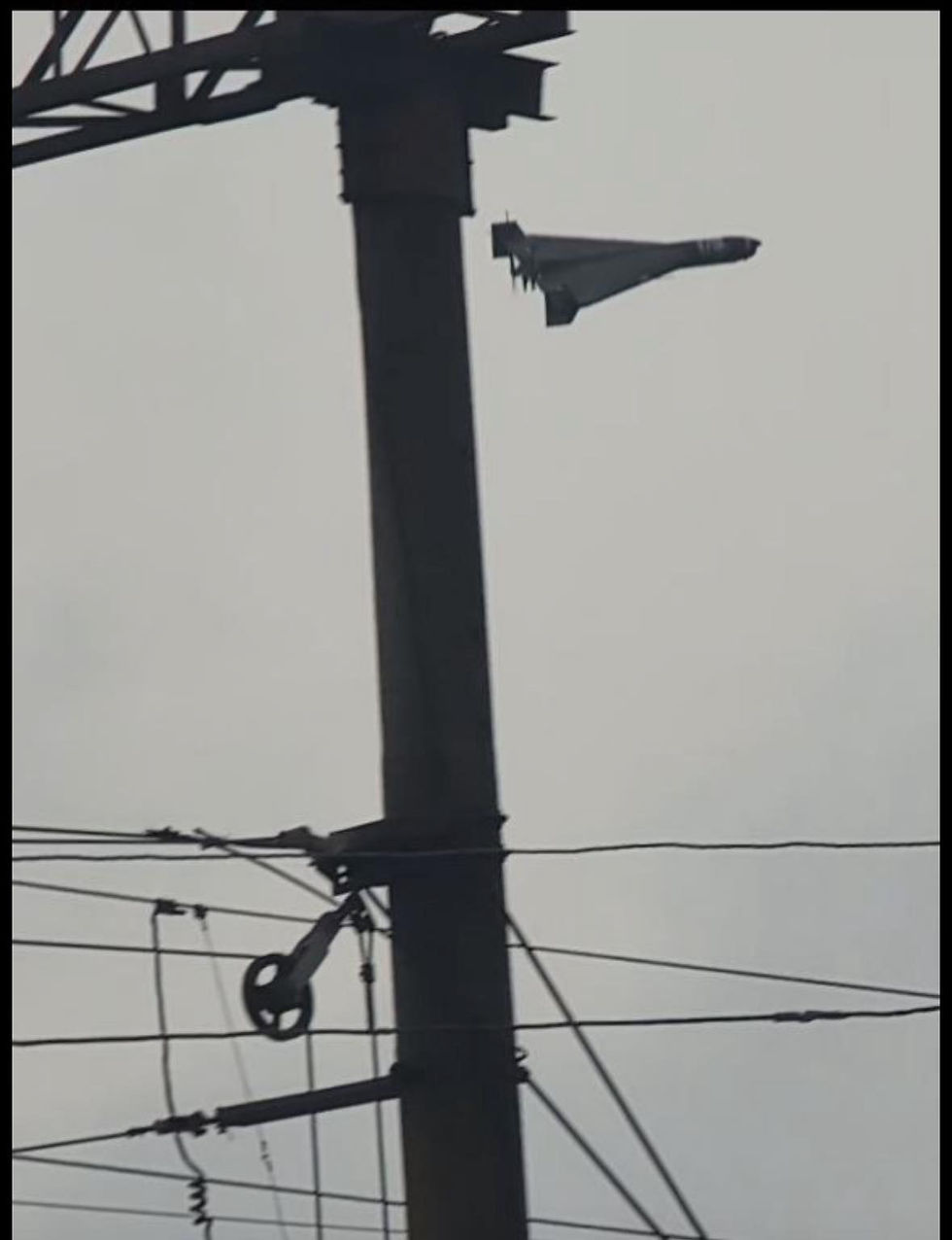The Booming China-Russia Drone Alliance
- Res Publica

- Jun 12
- 4 min read
The Russia-China axis is expanding as engineers from both sides work side-by-side to produce lethal drone technology.
By David Kirichenko

Source: Yicai Global
When beleaguered Ukrainian soldiers hear the telltale whine of drones above their emplacements this summer, the camera footage of their struggle is very likely to end up in the hands of Russo-Chinese tech teams, who will then use it to improve their deadly devices.
The involvement of Chinese experts in Russia’s war of aggression against Ukraine is becoming ever more intimate and extensive, echoing the close military ties between the two in the 1950-53 Korean war, when they fought against the US and allied common enemy.
Ukrainian President Volodymyr Zelenskyy said on May 27 that China has stopped selling Mavic drones to Kyiv and other European nations, while continuing shipments to Russia.
He added: “There are production lines on Russian territory where there are Chinese representatives.”
Maria Berlinska, head of the Air Intelligence Support Center and one of Ukraine’s leading drone experts, warned that despite her country’s history of innovation, the “systematic, monumental scientific projects of the joint Russian-Iranian-Chinese engineering teams” are having a profound effect. She said Russia will soon be able to launch more than 1,000 Shahed-type drones daily (in May, the heaviest single attack used 472).
Ukraine is clearly falling behind in the technological race, she said, as Russia surges ahead through a coordinated state strategy, massive research and development investment and support from its foreign partners.
It’s long been known that China has been sending military assistance to Russia. In September, US Deputy Secretary of State Kurt Campbell warned the aid was substantial. “These are not dual-use capabilities. These are component pieces of a very substantial effort on the part of China to help sustain, build, and diversify various elements of the Russian war machine,” he said. Chinese officers have also been “touring” Russia’s frontline to study the war firsthand.
Ukraine has reported that China supplies 80% of the critical electronics used in Russian drones, along with providing machine tools, gunpowder, and other materials to at least 20 major Russian military factories. It supports Russia’s missile production with vital materials, enabling continued manufacture of the Iskander-M ballistic missiles which rain down on Ukrainian cities. “Without China’s support, Putin’s war machine comes to a halt,” wrote US Senator Lindsay Graham on social media.
China may well be using Ukraine as a testing ground and is keen (as Western nations are) to get a stake in future battlefield technology.
In November 2023, Ukrainian General Valerii Zaluzhnyi acknowledged that the war had reached a stalemate and a major technological leap was needed to achieve a breakthrough. The battlefield had then taken on the characteristics of trench warfare, but now drones hunt soldiers and armored vehicles from above. Zaluzhnyi, now Ukraine’s ambassador to the UK, said drones had “caused the transformation of the entire architecture of the battle.”
As radio-controlled drones saturated the skies and electronic warfare made many attacks difficult, the technological race shifted toward AI-enabled targeting and fiber-optic drones. The latter have so far dominated since it is easier to develop and deploy them, by attaching a thin wire to a drone to help protect against electronic warfare. Ukraine is rushing to try to catch up, but Russia is still ahead in its production, which will help its current summer offensive.
Oleksii Zhulinsky, CEO of Ukrainian drone maker 3DTec, warned that Chinese-made fiber optic cable reels often contain hidden defects that cause drones to fail mid-flight. They are nonetheless extremely effective and give an edge to Russia, which uses its greater resources to prioritize fiber-optic drones, according to Ukrainian intelligence. In contrast, many of Ukraine’s drones rely on private donations, limiting the quantity of fiber-optic aircraft due to higher costs.
Meanwhile, Ukraine’s air defenses are under immense pressure as they struggle to counter the sheer volume of Russian drones and missile barrages. Several Patriot systems are deployed around Kyiv, but the Russians have adapted.
Moscow’s Iskander ballistic missiles now perform evasive maneuvers during their final phase, making it difficult for Patriot systems to calculate and intercept their trajectories. “The Iskander can release decoys capable of fooling Patriot missiles,” said Yurii Ihnat, spokesman for Ukrainian Air Force Command. Mick Ryan, a retired Australian Army Major-General said: “The Russians have learned to learn better and faster the longer the war has gone on.”
Oleksandr Yakovenko, CEO of TAF Drones, one of Ukraine’s largest drone manufacturers, agreed, warning that “Russia goes step by step. If it continues like this for two more years, it will be impossible for us to keep defending.”
While Ukraine has managed to hold the line for over three years using low-tech, improvised solutions, these are now being outpaced by the systematic, well-funded advances of its adversaries. Without a leap in both fundamental and applied science, Ukraine risks losing its edge, as temporary fixes will eventually fail and morale may collapse, said Berlinska.
“In the past year, this Ukraine-Russia adaptation battle has metastasized into a global adaptation war. Russia has formed a learning community with China, Iran, North Korea and possibly others,” said Ryan. China is already testing advanced fiber-optic drones, he added.
“Together they are sharing battlefield lessons, collaborating in technology development and sanctions evasion, while also sharing and collaborating on methods of coercion, subversion, misinformation and, of course, learning and adapting,” he said.
Russia’s war in Ukraine has become a training ground for the West’s adversaries to sharpen their capabilities and deepen tech cooperation. The technology and tactics now emerging may well one day be used to fight the US.
By David Kirichenko. David Kirichenko is a freelance journalist and an Associate Research Fellow at the Henry Jackson Society. Article first time published on CEPA web page. Prepared for publication by volunteers from the Res Publica - The Center for Civil Resistance.





Comments